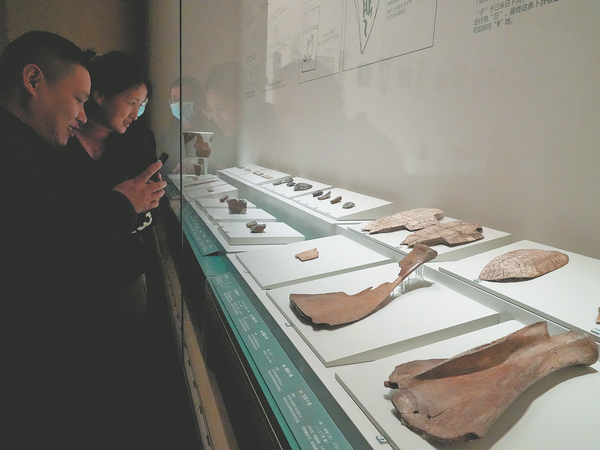Tech approach gives life to artifacts
By Yang Feiyue | China Daily | Updated: 2024-08-05 08:03

Unlike other famous ancient writing systems, such as Egyptian hieroglyphs, Babylonian cuneiform and Mayan glyphs, the character precursors on oracle bones eventually evolved into modern characters over the course of thousands of years.
In the museum's oracle bone gallery, visitors can manipulate high-precision 3D models of oracle bones on screen, which are vivid demonstrations that add depth to the overview of the Shang Dynasty provided by museum guides. Among them is Liu Mengke, who says that the Shang Dynasty was fond of divination, devoted to rituals and followed etiquette.
Some of the oracle bones from the Yinxu site turned out to be a kind of diary kept by a son of Shang Dynasty king Wu Ding.
"The bones are a vivid record of the son's daily activities and show that he resorted to divination whenever he was about to embark on something new," Liu says, adding that this included hosting sacrificial rituals, leading an army to war and organizing hunting expeditions.
A digital poster outside the gallery enables visitors to further appreciate the culture of oracle bones, allowing them access to the detailed interpretations of oracle bone scripts and a short quiz to put their knowledge to the test.
The range of questions cover different aspects of the oracle bone culture. After completing the quiz, visitors can view their results and use the information visualization function to review what they have learned, deepening their understanding of the ancient relics.
























